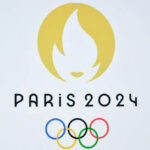

Ad networks are one of the main channels companies use to increase reach. That said, with so many different ad networks available, it can be tough understanding what benefits each has to offer and which one will work the most in your favor.
While there are numerous digital ad networks available, here are some basic pros and cons of major advertising platforms, including Google, Facebook, Twitter, and LinkedIn.
Google AdWords
Pros
● Affordable – the average cost is about $1 – $2 per click (sometimes less) for Google AdWords, which makes it a fairly affordable advertising platform for any business. Also, AdWords allows you to pick which keywords you bid on. This means that you can select more budget-friendly keywords.
● You have control – when you understand how to use AdWords, you have both the freedom and the power to control and fine-tune a campaign to drive your best leads.
Cons
● Daunting learning curve – Although creating the campaign is fairly easy, picking the appropriate keywords for the type of campaign you’re running can be challenging if you’ve never run a pay-per- click ad campaign before.
● Potential high costs – if you are not careful, you can easily spend a ton of cash with AdWords. Each time you log in, Google will tempt you to increase your budget by showing you how many more clicks you will attain if you do what is recommended.
● Immediate exposure on Google – Natural rankings can be an intensive task and advertising offers immediate placement for keywords important to your business.
Pros
● Huge reach – Facebook’s average monthly user-base is 1.5 billion people. The potential reach is massive. Plus, Facebook users are very diverse and include teens, Millennials, parents, seniors, executives, politicians, pet lovers, etc.
● A myriad of targeting options – effective marketing is all about targeting niche audiences. With Facebook you can focus your targeting with options like gender, age, interests, location, marital status, hobbies and even content interaction (e.g. shares, likes, etc.)
Cons
● Low Conversion Rates – compared to other platforms like AdWords, Facebook ads typically have overall lower conversion rates. Overall the global click-through- rate (CTR) is roughly 1 click for every 250 – 500 impressions.
● Fake profiles – while the problem is no longer as bad as it was, there are still make fake profiles and accounts on Facebook and this could hinder campaign efforts.
Pros
● You can go viral – manage to attach the right hashtags to blog posts, images, text-based tweets and videos or if you happen to place your ad in front of the right people, you can become a sensation on Twitter.
● Creative features – using the Twitter Audience Platform you can transform promoted tweet into one of the platform’s immersive ad formats. These include video, native ads, interstitials or banners. These features let you extend your best content beyond Twitter.
Cons
● Inaccurate targeting – for the most part, Twitter targeting is relevant but sometimes the advertisement is not relevant to the person viewing it. Another problem is that ads can blend into the feed and become lost in all the clutter.
● low-grade analytics – compared to Facebook and Google, Twitter analytics are not nearly as in-depth, which makes it harder to track stats.
Pros
● Target a unique audience – with over 500 million active professionals on LinkedIn, you have the power to target professional users based on job title, industry, company, location, function and more.
● Budget Flexibility – The amount you pay to advertise on LinkedIn is your choice. You can start with any size budget and stop your ads whenever you want. You can choose your ad pricing and there are three ways to control your advertising spend: Total Budget, Daily Budget and Setting Bids.
Cons
● Higher CPC pricing – LinkedIn’s average CPC (Cost Per Click) is estimated to be about $6 and the company notes a minimum $10 daily budget for campaigns, which is much higher than Facebook’s estimated $0.50 CPC and daily minimum of as low as $1.


